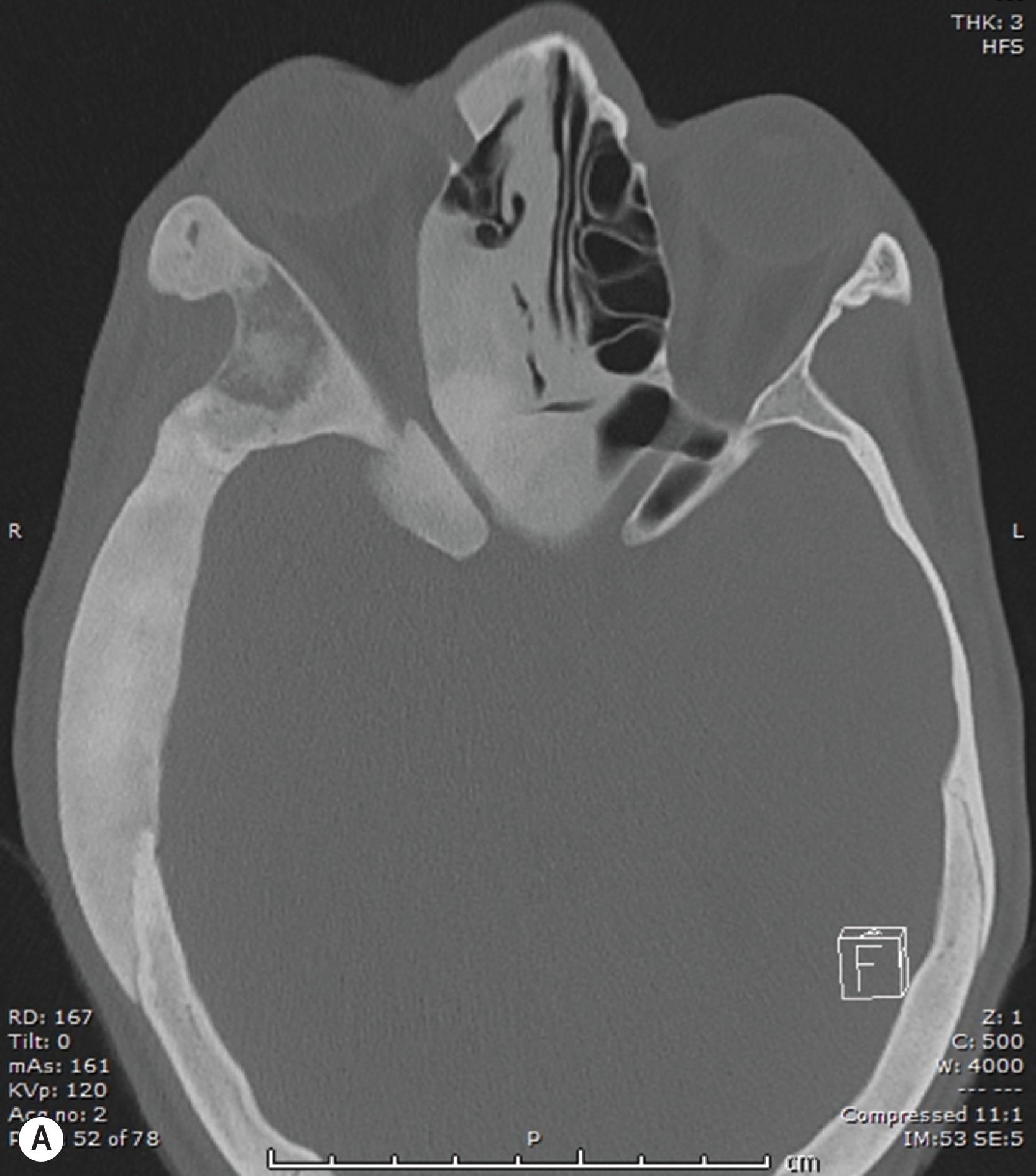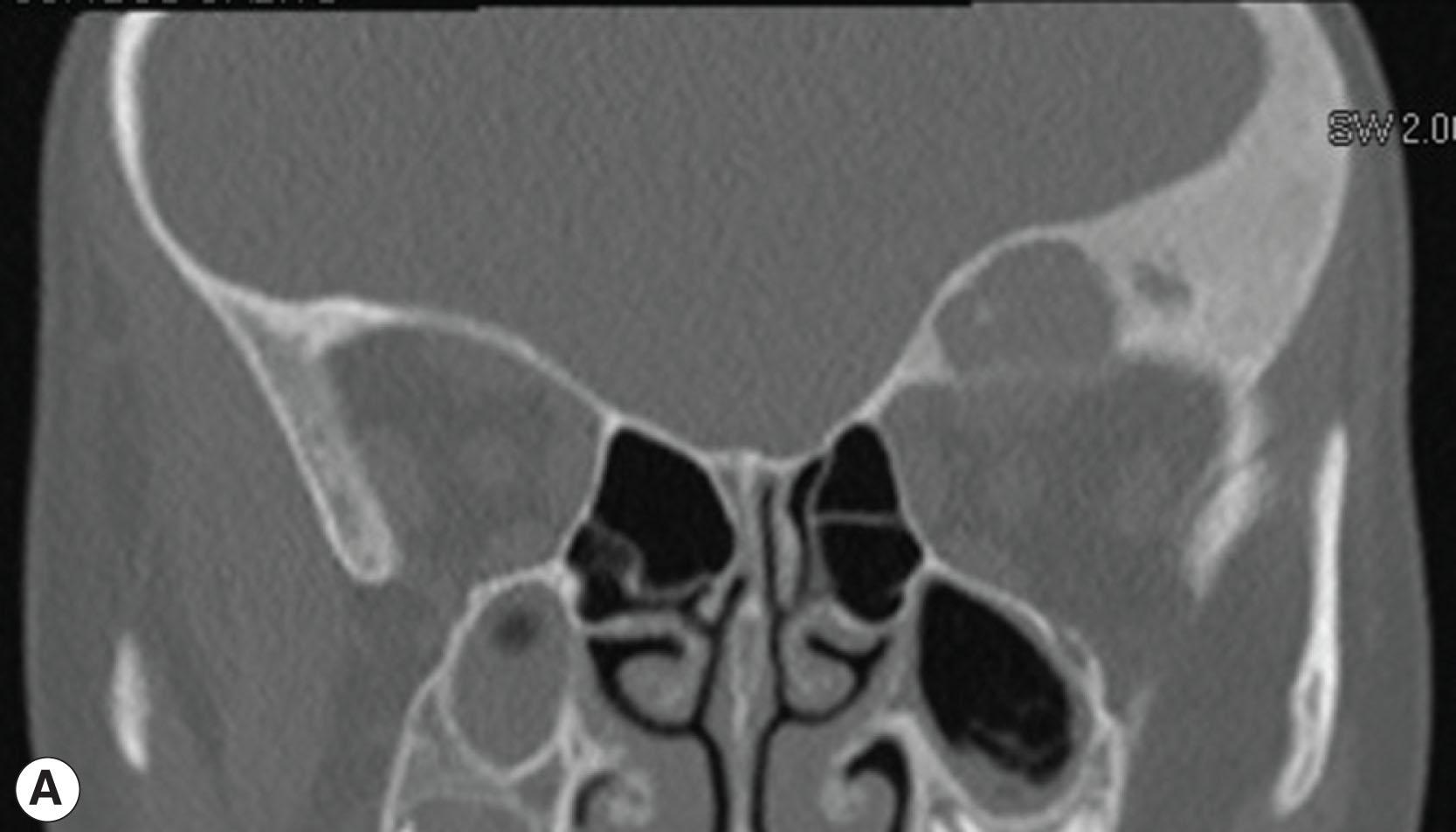Physical Address
304 North Cardinal St.
Dorchester Center, MA 02124
Orbital mesenchyme arises from the neural crest; mesenchymal stem cells develop into a wide variety of tissues, including smooth and skeletal muscle, fat, cartilage, and bone. Orbital mesenchymal lesions constitute about 5% of pediatric orbital disease. Bony lesions are the largest group. Every mesenchymal component of the orbit can give rise to benign (e.g. lipoma, rhabdomyoma, leiomyoma, fibroma, myxoma, angiomyxoma) or malignant tumors (e.g. alveolar soft part sarcoma, liposarcoma, leiomyosarcoma, fibrosarcoma, angiosarcoma, osteosarcoma), but these are exceedingly rare and, other than those discussed below, are beyond the scope of this chapter. Nevertheless, sarcomas are part of the differential diagnosis of rhabdomyosarcoma, which is discussed in Chapter 22. This chapter will focus on the more common bony mesenchymal lesions of childhood; some excellent reviews of bony lesions have been published.
“Facial dysplasia” has been described as a defect resulting from an alteration of a bone production centre, with each dysplasia named after the site of developmental arrest, and best recognized by the “clefts” described by Tessier, while “true clefts” describe disturbance in the fusion of embryonic facial processes. However, this discussion is beyond the scope of this chapter.
Fibrous dysplasia (FD) is a rare benign developmental pseudotumoral disorder, characterized by the replacement of normal bone by a cellular fibrous stroma containing islands of immature bone and osteoid, which does not remodel along lines of stress into lamellar bone. It most commonly affects long bones, ribs, and the craniofacial skeleton and has no gender predilection. It has been reported in infancy but usually presents in childhood; its onset is insidious, and it may remain asymptomatic until adulthood. Progression usually slows in the second or third decade, when “bone maturity” is reached, although growth may continue into the fourth decade in some cases. It is important to distinguish it from meningioma and osteosarcoma.
FD may be confined to a single site (monostotic) that tends to occur after the late teenage years. Conversely, polyostotic FD is 6–10 times less common and tends to occur in childhood and stabilizes around puberty. Polyostotic FD co-existing with one or more extraskeletal features (café-au-lait cutaneous macules, gonadotropin-independent sex steroid production resulting in precocious puberty, and other endocrine abnormalities such as neonatal hypercortisolism) constitutes the McCune–Albright syndrome (MAS), although MAS can occur with two or more extraskeletal features without FD. FD and MAS are caused by sporadic post-zygotic mutations in the GNAS locus on 20q13.32, resulting in a constitutively active Gα S signaling protein; somatic mosaicism may occur. These mutations result in upregulation of osteoclast function, causing excessive bone resorption and dysplastic fibrous growth. The Gα S mutation can be tested for in peripheral blood. FD associated with intramuscular myx-omas is characteristic of the rare Mazabraud syndrome; the myxoma is defined as an extraskeletal manifestation of FD/MAS and may occur with any form of FD (monostotic, polyostotic or MAS). Other tumors may arise from fibrous dysplasia, e.g. meningioma, cutaneous fibromyxoma, malignant transformation (osteosarcoma, fibrosarcoma, chondrosarcoma, giant cell sarcoma) in 0.4%–1%, the risk is increased in MAS, Mazabraud syndrome, polyostotic disease, males, and previous radiotherapy. Rarely, metastases may occur in FD-affected bone.
Three-quarters of patients with orbital FD have the monostotic form affecting several contiguous bones but the disease usually remains unilateral. The craniofacial region is affected in 20% of patients, especially in polyostotic disease, with a predilection for the frontal, sphenoid, and ethmoid bones. Typically there is a firm, bony swelling with contour distortion and sometimes pain; in the orbit there may be accompanying mass effect. The clinical presentation depends on the predominant wall involved, most commonly the roof, resulting in proptosis with downward displacement of the globe and orbit. The lacrimal fossa may be affected, mimicking a lacrimal gland tumor. Maxillary disease ( Fig. 23.1 ) displaces the eye upwards, sometimes with nasolacrimal duct stenosis. Sphenoid involvement may result in optic nerve compression from narrowing of the optic canal ( Fig. 23.2 ) or by an associated sphenoid sinus mucocele. Rarely, involvement of the sella turcica may result in chiasmal compression. Other uncommon neuro-ophthalmic complications include cranial nerve palsies, trigeminal neuralgia, raised intracranial pressure, and papilledema. Extensive craniofacial involvement can result in severe cosmetic deformity. Pain may occur, either localized or as a diffuse ipsilateral headache. Visual loss is not uncommon. The natural history is one of slow growth into adolescence or early adulthood, with subsequent cessation of growth. Malignant transformation occurs in less than 1% of cases, possibly higher if there has been previous radiotherapy. The accompanying signs are rapid progression, worsening pain, and infiltration of surrounding structures.


The main radiologic feature of FD is expansion of bone. Appearances on CT can include “sclerotic” (hyperdense), with a dense “ground-glass” homogeneity, “lytic” (hypodense), or mixed sclerotic and lytic components. Most orbital cases are easily diagnosed since they are sclerotic. Signal density correlates with amount of bone and its mineralization. The main radiologic differential diagnosis includes Langerhans cell histiocytosis, hyperostotic meningioma, Paget disease (these latter two both rare in children), and some bone tumors. Magnetic resonance imaging (MRI) usually shows iso- or hypointensity on T1 and hyperintensity on T2, with a “milk cloud” appearance often seen on T1 contrast-enhanced sequences, and a correlation between T1 and T2 signal intensity and clinical and pathologic activity of the lesion. Occasionally, large cystic lesions form, which may contain blood ( Fig. 23.3 ) and necrotic debris and can be mistaken for aneurysmal bone cysts. Involvement of a neighbouring sinus may mimic mucocele. CT scanning with the possible addition of MRI is the best modality to evaluate the extent of cranial and orbital involvement. The optic canal and chiasm should be assessed for signs of compression.

Fibrous dysplasia is usually benign and self-limiting with growth during skeletal maturation, although quiescence may not occur in adulthood and polyostotic lesions tend to grow after skeletal maturity is attained. However, the final extent and time of arrest of the lesion are unpredictable. Treatment aims to prevent complications, especially optic nerve compression, and improve cosmesis, ideally after growth has ceased. Analgesia, correction of vitamin D, calcium, and phosphate disorders are recommended, and parenteral bisphosphonate therapy may be indicated for severe pain.
When there is little doubt about the diagnosis, initial observation and repeat radiologic assessment is advised. If the lesion in the orbital wall is lytic or cystic, biopsy may be necessary to confirm the diagnosis. Radiotherapy is not routinely used in the management of FD and best avoided, although the risk of malignant change after radiotherapy is low.
Surgery traditionally consisted of debulking the lesion. It may be indicated for cosmetic disfigurement, intractable pain, or optic nerve compression, however long-term outcomes in terms of pain and regrowth can be variable and unpredictable; simple curettage is ineffective and may increase complications. Options include debulking (burring) and subtotal or total excision with reconstruction. Since dysplastic bone can be vascular, preoperative blood cross-matching is advisable. Resection of dysplastic bone around the optic canal may reverse visual loss of early compressive optic neuropathy. Steroids may also be useful. When decompressing the optic nerve, careful use of diamond burrs with copious irrigation and/or rongeurs should be used to minimize optic nerve damage. The margins of the affected bone are difficult to define clinically and recurrence is relatively common if incompletely excised. In the last 20 years, there has been a shift toward more radical excision of all diseased bone, where possible, and immediate facial and orbital reconstruction using bone grafts. While some groups report no visual function deterioration following early optic canal decompression, there have been reports of blindness complicating prophylactic nerve decompression. Visual loss may result from progressive optic canal stenosis, rapid expansion of cystic components, compressive mucoceles, or hemorrhage. Prophylactic optic canal decompression is not indicated and a conservative approach is warranted. In this context, serial visual fields, color vision, and optical coherence tomography can be helpful. Optic canal decompression should be reserved for patients with progressive or sudden deterioration of visual function, e.g. from cyst, hemorrhage, or malignant transformation.
Sphenoid dysplasia (or aplasia) is a diagnostic criterion for neurofibromatosis type 1 (NF1), occurring in up to 10%, and results in temporal lobe herniation into the orbit with pulsatile proptosis with or without hypoglobus. Other facial bones may also become dysplastic in NF1 in relation to orbitofacial plexiform neurofibroma. Reconstruction may be required in cases of progressive exposure keratopathy or disfiguring proptosis.
Become a Clinical Tree membership for Full access and enjoy Unlimited articles
If you are a member. Log in here